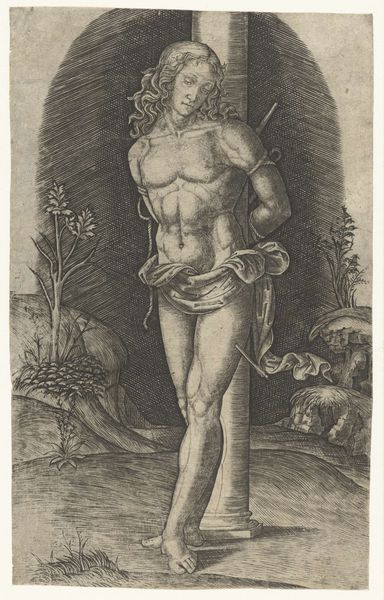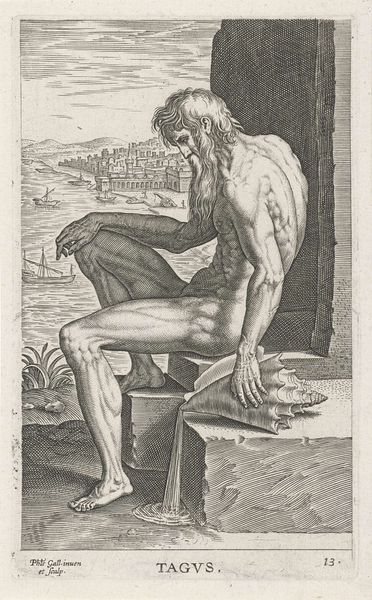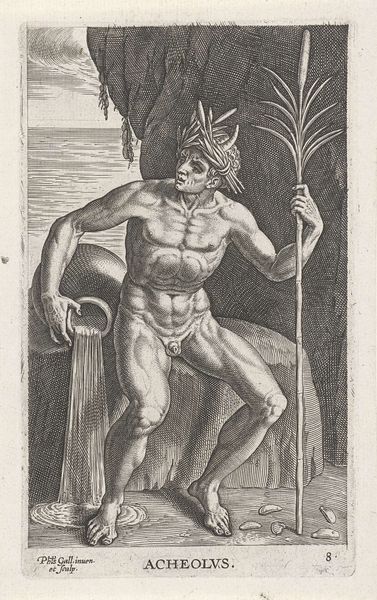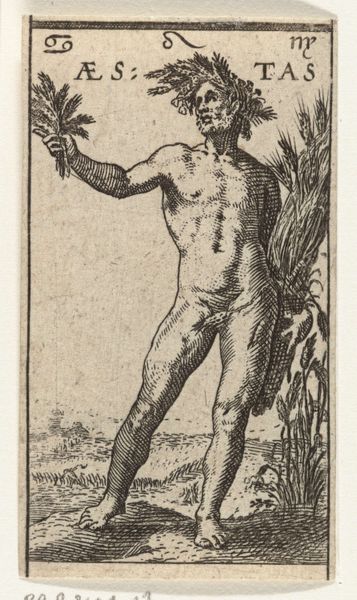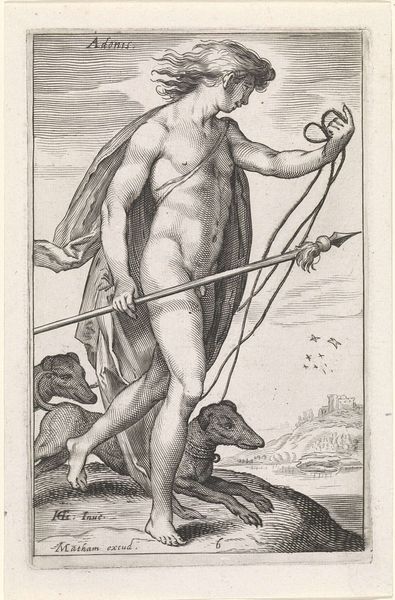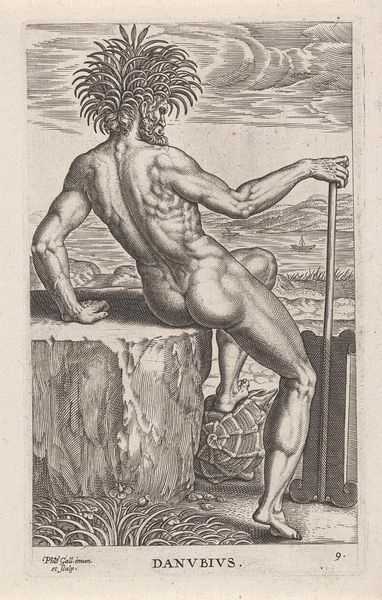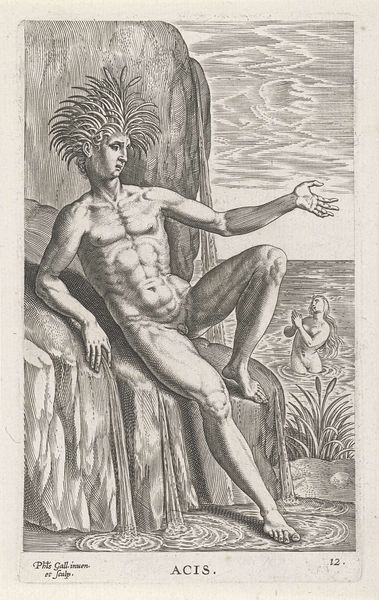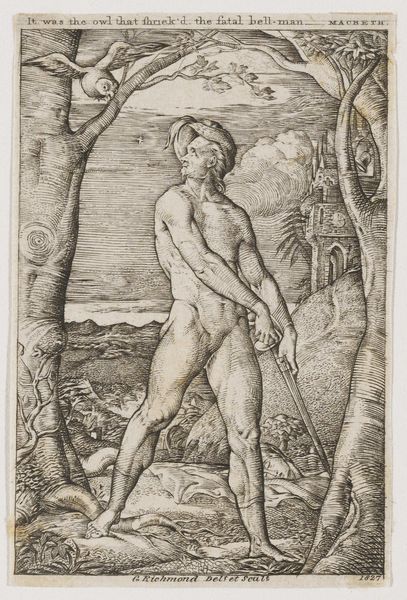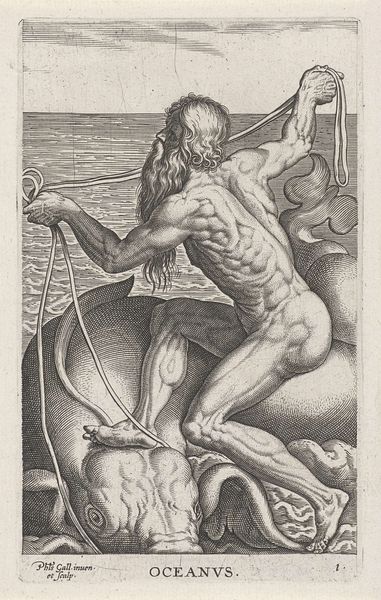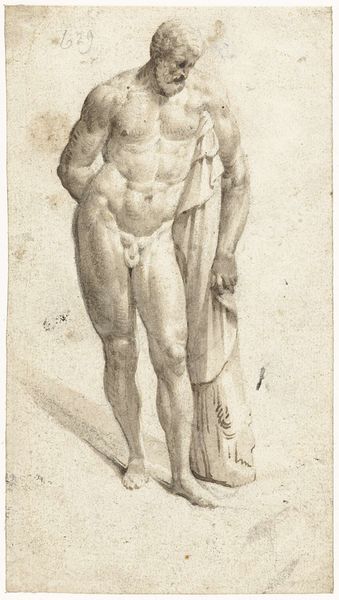
Dimensions: height 165 mm, width 102 mm
Copyright: Rijks Museum: Open Domain
Philips Galle made this print, Riviergod Rhenus, sometime between 1550 and 1600, using engraving, a technique of cutting lines into a metal plate to hold ink. The result is a finely detailed image of the river god Rhenus. Look closely, and you’ll notice the way Galle’s meticulous cuts define the god’s muscular form, the flowing beard, and the bounty of grapes he offers. Engraving demands a high degree of skill and control. The artist’s hand is evident in every line, a testament to the engraver's labor and expertise. Prints like these were crucial to the circulation of visual ideas, acting as a kind of social media of their time. Galle's print not only showcases technical virtuosity but also embodies the cultural values of the Renaissance, linking classical mythology with the burgeoning print industry. It is through understanding these materials, techniques, and the social contexts that we can fully appreciate the depth of expression.
Comments
No comments
Be the first to comment and join the conversation on the ultimate creative platform.

